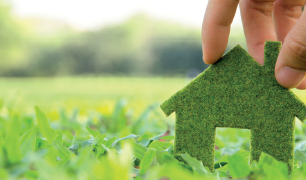Eco-Friendly Homes
There are many different aspects of a home that have an impact on the environment. Each one has a different role to play. While no single step offers the solution to the sensitive eco-balance of the earth, taken together these can all help to make a difference. For building an ecofriendly house, some of the following considerations need to be taken into account:
Sustainable materials - Many building materials can come from a sustainable source or are created using renewable resources. Timber, for instance, is now available from wood that has been grown and harvested under strict conditions. Buying wood from these sources ensures that deforestation slows.
Recycled Materials - There are many items used to build a home that can come from recycled sources. Wooden floorboards, tiles and bricks are all perfect for reuse. Using recycled materials has the dual benefit of keeping rubbish out of landfills while also preserving important untouched resources.
Energy Efficiency and Alternative Energy - The ideal green home will be energy efficient and use alternative energy sources if appropriate. This does not mean that the household need to shiver uncomfortably in an unheated house! This simply means that energy is used carefully and conserved where possible. Good insulation helps to keep in heat and adds to the energy efficiency of a house. This can also help to save money in the long run. Other simple measures to help energy efficiency and save energy include fitting automatic light switches that switch off at a given time and ecofriendly light bulbs.
Water Conservation - Water is an important earth resource and one that often gets overlooked. The fact that clean water comes from the tap on demand is often taken for granted. However, a long process takes place just to get water to a household, much of which is flushed straight away. Becoming more aware of water usage is an essential part in running
a green home. Low flow toilets and front loading washing machines are both interesting alternatives.

